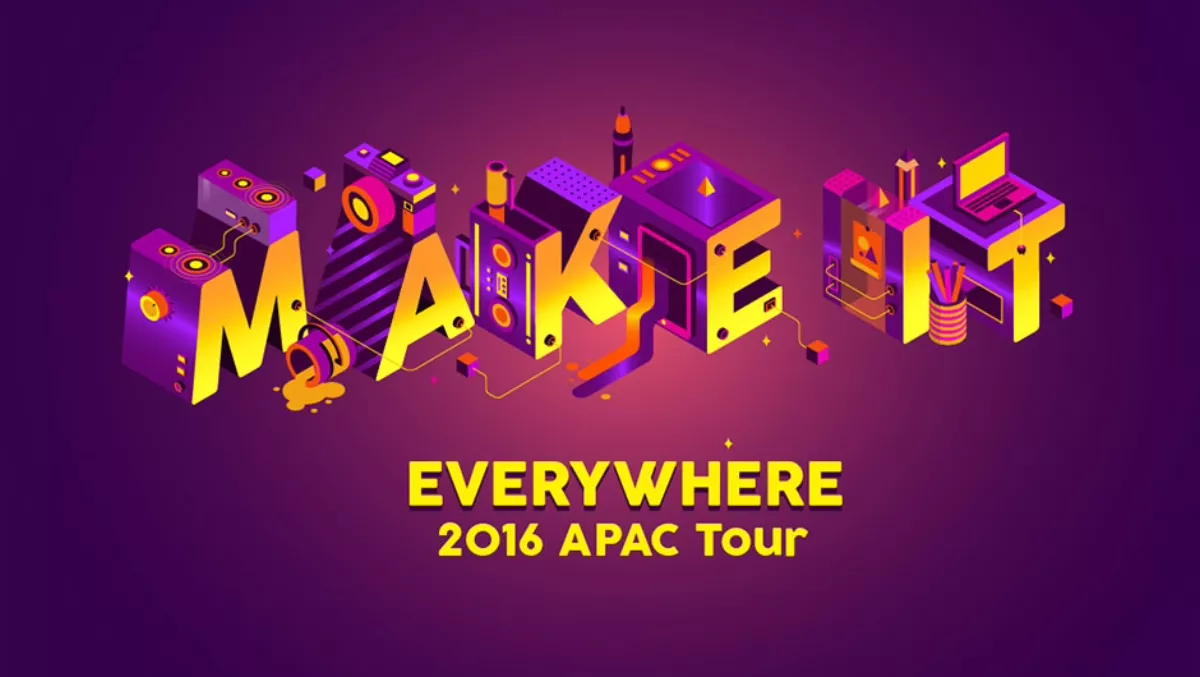
Five years of digital disruption for Adobe in the creative industry
We report back from thisweek's Adobe Make Everywhere roadshow across Australia and New Zealand.
Old fashioned business models are being disrupted by new technologies all over the globe. Mobile devices and new two-sided markets like Uber seem to be the poster child.
One of the sets of industries that has seen a huge change but we haven't heard much about is the creative industries. By that, I mean the graphic designers, videographers and photographers.
Adobe has long been a leader in design software. For a long time, it sold individual applications like Photoshop and Illustrator as a boxed product. It then bundled them together into what it called the Creative Suite. This radically changed five years ago when it moved this suite of boxed product into a cloud delivered system called Creative Cloud.
Initially, it was the delivery of the same tools but via download instead of cardboard boxes. Obviously, this came with a new way of paying for the tools too. You paid a much smaller monthly or annual amount instead of buying a boxed upgrade every two years.
Australia and New Zealand were the test market for this new cloud-based approach for Adobe five years ago.
One of the key advantages of this new cloud delivery method is that new features can be rolled out very quickly. While Adobe does have lots of smaller updates, some of which even have major new features they also do have major updates each year.
Out of Adobe's 20 Creative Cloud apps, 15 of them have had updates just in the last month alone. These updates are included as part of your subscription.
Although over the last two years Adobe has gone much much further than just cloud delivery. It's reinvented its tools to fully embrace the cloud. From storing all your documents up in the cloud and accessing them on any device, through to stock photography, embracing smartphone apps, workflow tools and other cloud services.
"Our latest Creative Cloud looks nothing like what Creative Suite used to. The cloud, our services and collaboration elements have massively changed the way creative people work forever" says Paul Burnett, Adobe Principal APAC Evangelist for Creative Cloud.
This massive change in the tools that creatives use is having a profound effect on the ground too.
Mark Gee a world renowned astro photographer used the new tools deep in the Kenyan desert to work with clients, photographers and his followers all over the world.

He was using Adobe Lightroom to share his stellar photos from his computer via 3G networks, all from the desert.
"The real-time and much faster feedback cycles from clients are entirely changing the creative industries," says Burnett.
"78% say the role of creatives is changing rapidly or very rapidly with 58% citing new technologies as driving this change" according to Adobe's APAC Creatives Survey.
Adobe's tools that used to require massively expensive desktop workstations now can be used in the field on laptops.
You could see this in action with Adobe After Effects, which has recently been rebuilt from the ground up so that tasks that had previously taken minutes to render desktop workstations now render live on laptops anywhere. Beyond the creative mobility and bringing the design from the studio to the field, the other key change is data.
It used to be that designers would create material, send it off and hope for the best. Now there is a massive data stream coming back.
Data like where the user's mouse hovered longest. Which coloured advert got the most clicks When did visitors stop watching my video?
All of this data, combined with online cloud collaboration and bringing the studio out to the field are changing the creative industries forever.
Some might call it digital disruption. Adobe calls it their magic. Although for most creative professionals it simply means more time being creative and less time doing the boring bits.


